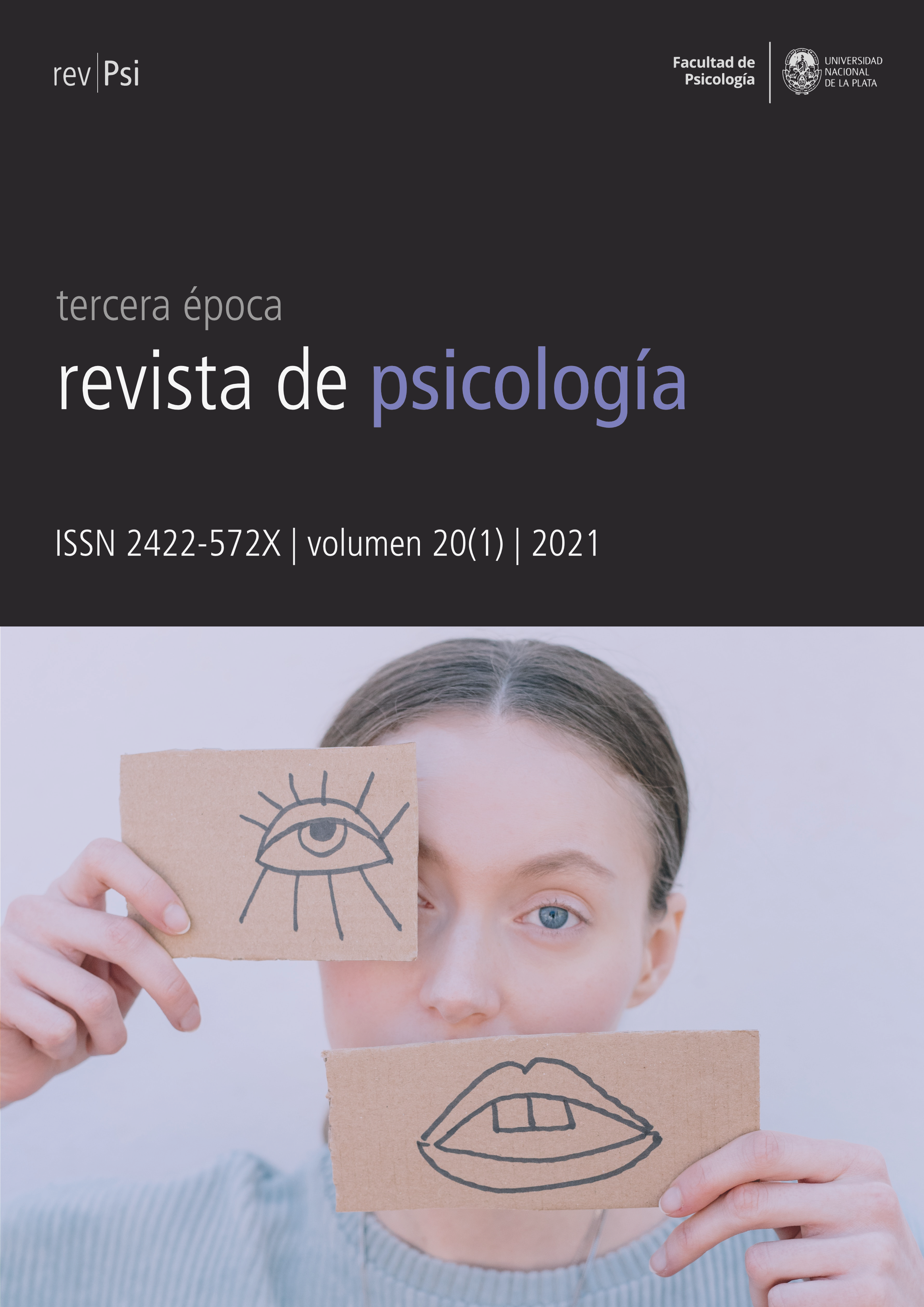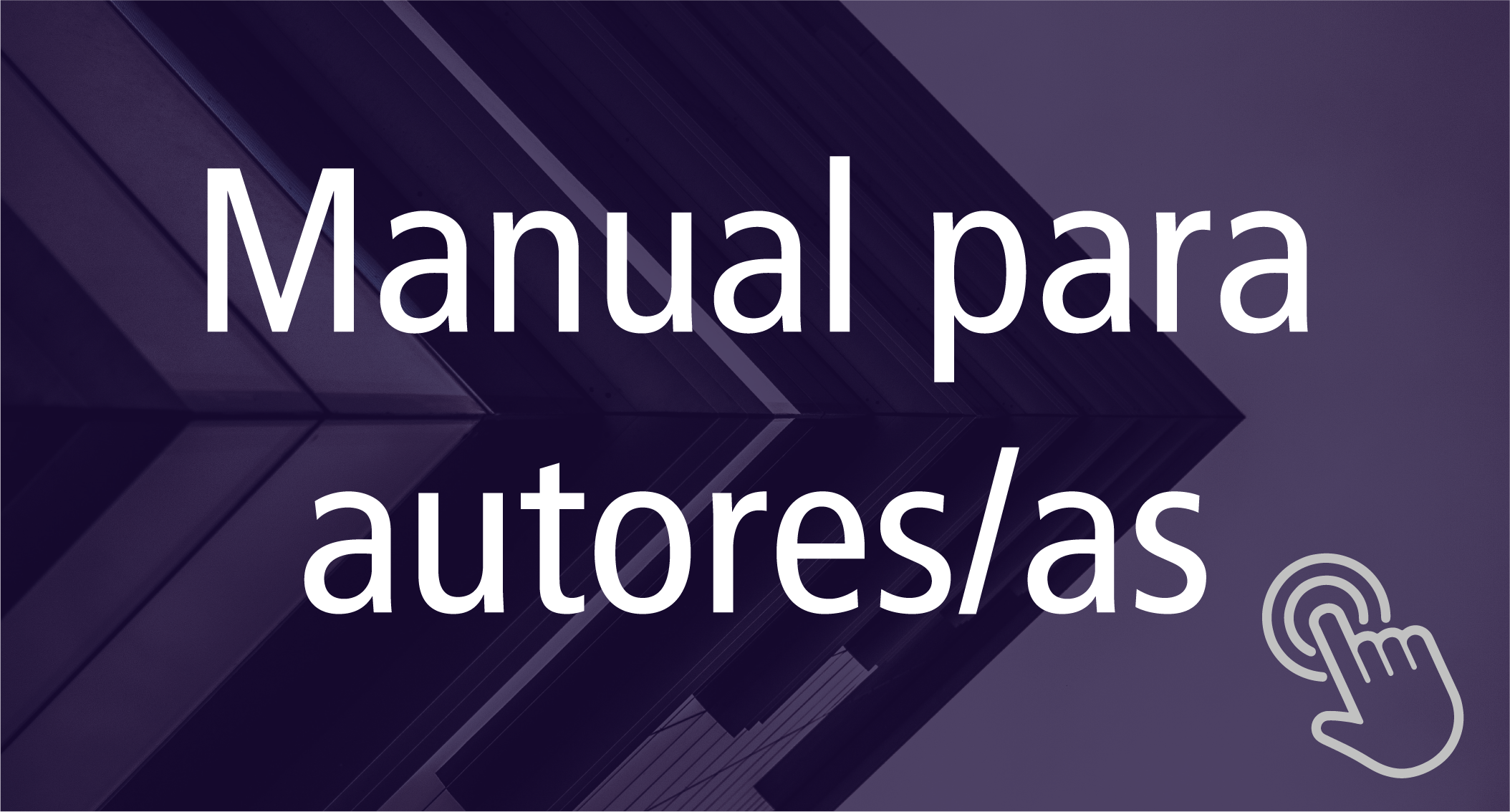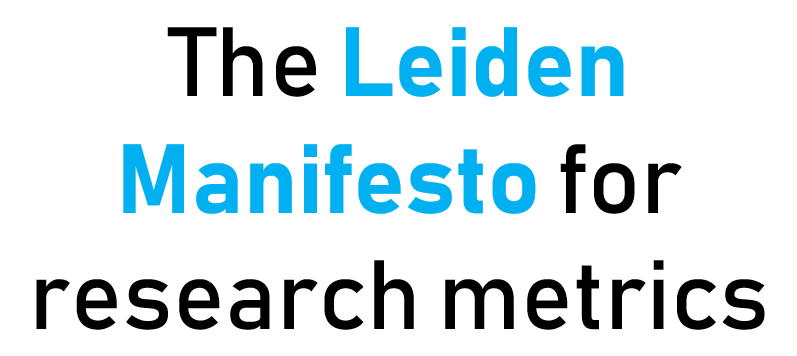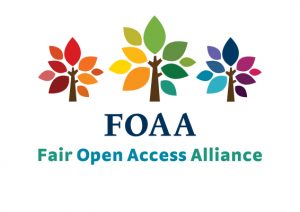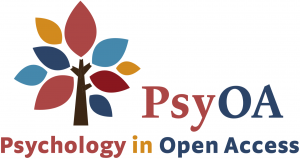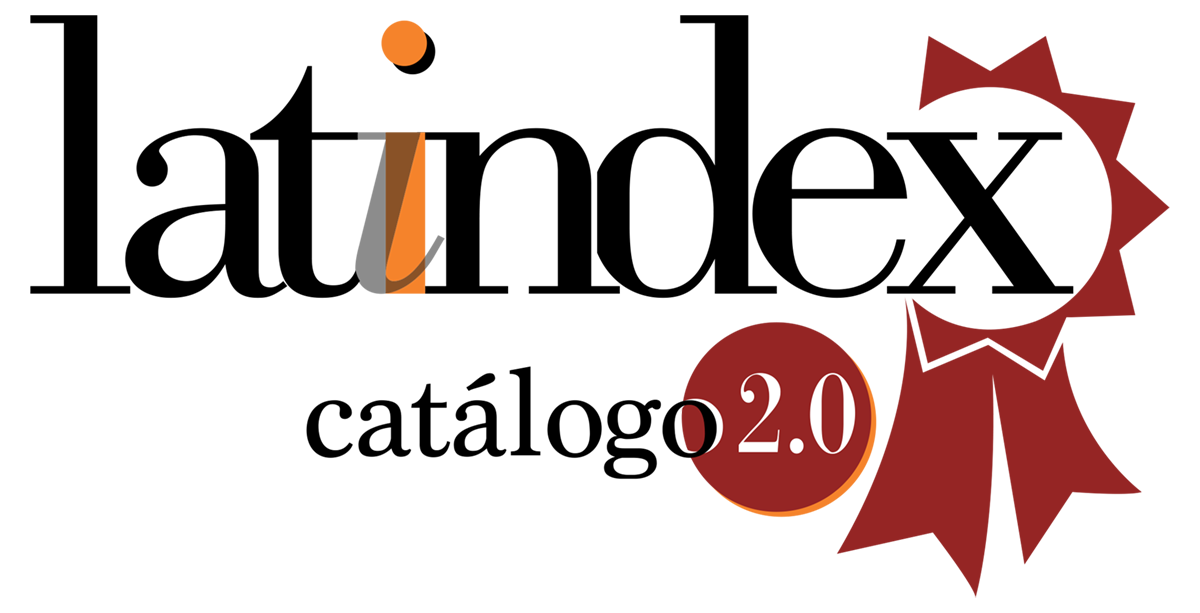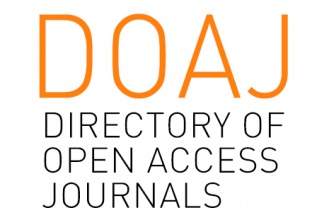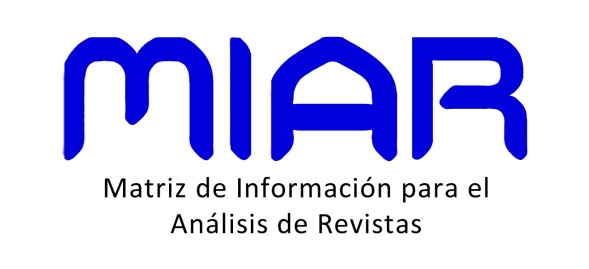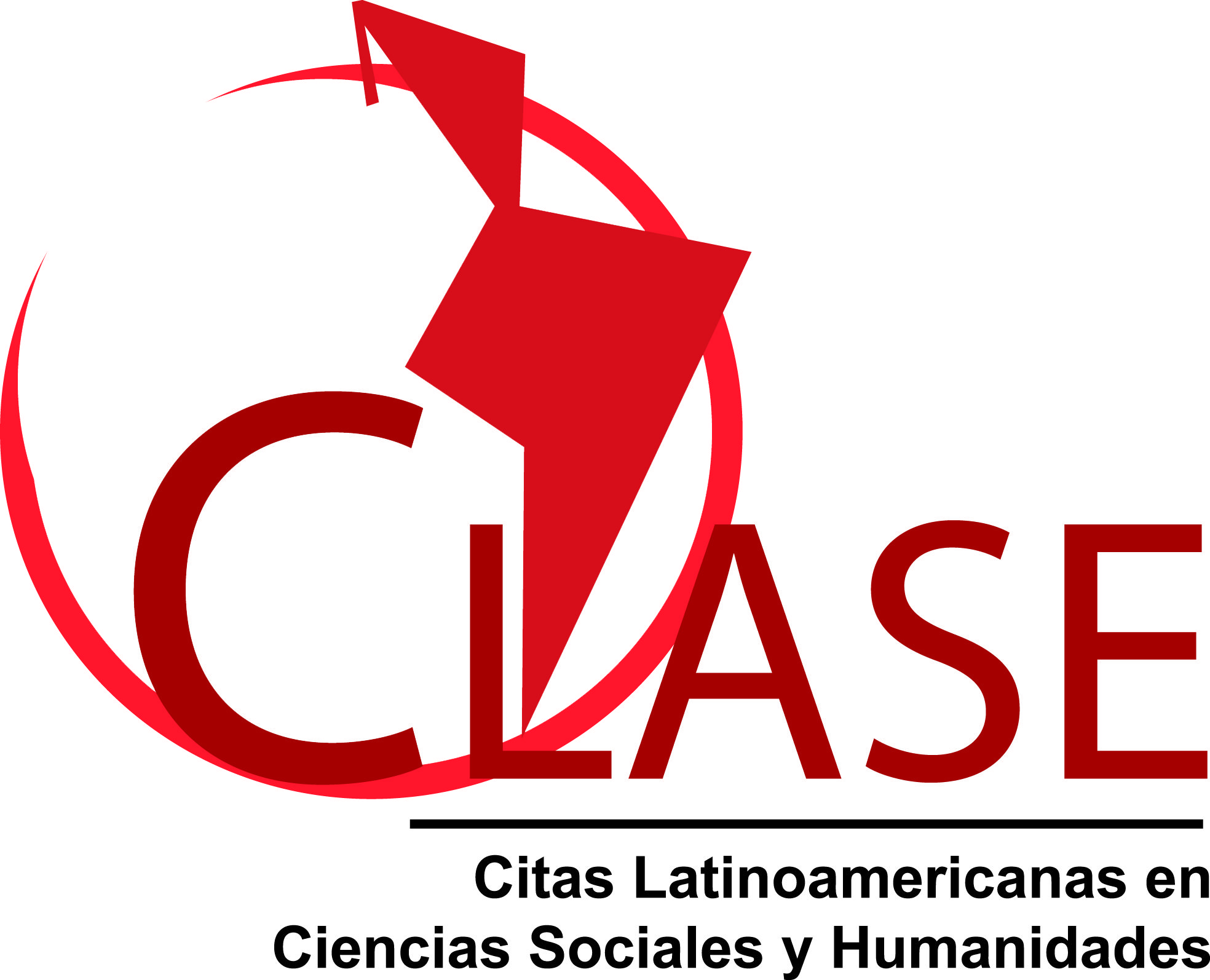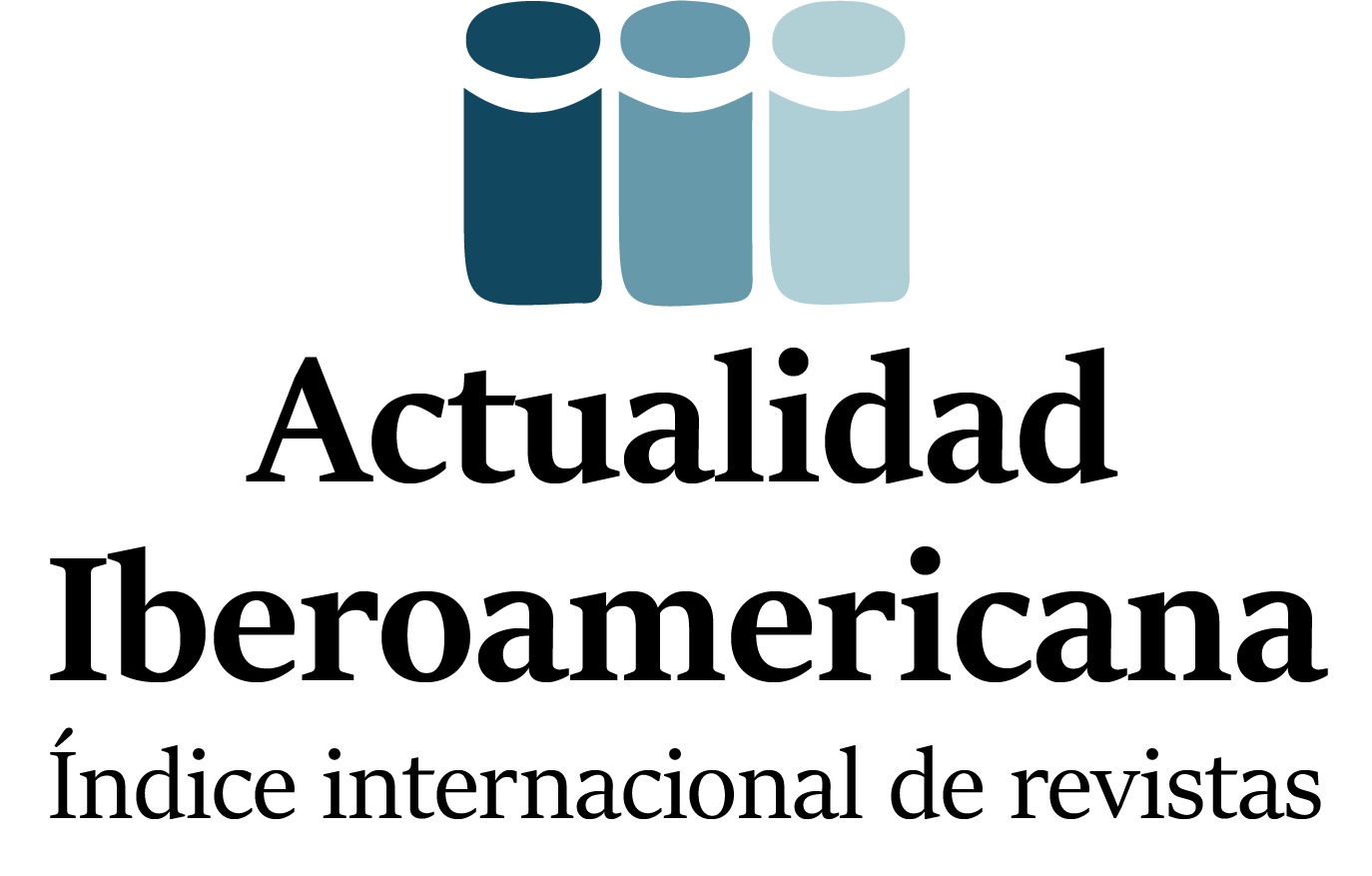Reír para recordar: mejora de la memoria en relación con el humor
DOI:
https://doi.org/10.24215/2422572Xe125Palabras clave:
risa, humor, cerebro humano, memoria, emociones positivas, redes cerebralesResumen
Las emociones positivas son valoradas y buscadas en nuestra vida diaria, pero aún no se comprende bien el rol funcional que juegan en la cognición humana. A pesar de ciertas similitudes, las emociones positivas y negativas parecen depender de vías neuronales distintas y, por tanto, podrían influir de manera diferente en funciones cognitivas como la memoria. En este artículo de revisión, se presentan los efectos cognitivos y los fundamentos neuronales de las emociones positivas, centrándose en las especificidades de las emociones inducidas por el humor. Posteriormente, se describe la influencia beneficiosa del humor sobre la memoria y se analizan los posibles mecanismos neuronales a través de los cuales el humor puede mejorar la memoria en el cerebro humano.
Referencias
Anderson, A. K., Christoff, K., Stappen, I., Panitz, D., Ghahremani, D. G., Glover, G., Gabrieli, J. D. E. y Sobel, N. (2003). Dissociated neural representations of intensity and valence in human olfaction. Nature Neuroscience, 6(2), 196-202. https://doi.org/10.1038/nn1001
Arroyo, S., Lesser, R. P., Gordon, B., Uematsu, S., Hart, J., Schwerdt, P., Andreasson, K. y Fisher, R. S. (1993). Mirth, laughter and gelastic seizures. Brain, 116(4), 757-780.
Bains, G. S., Berk, L. S., Daher, N., Lohman, E., Schwab, E., Petrofsky, J. y Deshpande, P. (2014). The effect of humor on short-term memory in older adults : A new component for whole-person wellness. Advances in Mind-Body Medicine, 28(2), 16-24.
Bains, G. S., Berk, L. S., Lohman, E., Daher, N., Petrofsky, J., Schwab, E. y Deshpande, P. (2015). Humors effect on short-term memory in healthy and diabetic older adults. Alternative Therapies in Health and Medicine, 21(3), 16-25.
Barrett, L. F. y Russell, J. A. (1999). The structure of current affect : Controversies and emerging consensus. Current Directions in Psychological Science, 8(1), 10-14.
Bartolo, A., Benuzzi, F., Nocetti, L., Baraldi, P. y Nichelli, P. (2006). Humor comprehension and appreciation : An fMRI study. Journal of Cognitive Neuroscience, 18(11), 1789-1798. https://doi.org/10.1162/jocn.2006.18.11.1789
Bekinschtein, T. A., Davis, M. H., Rodd, J. M. y Owen, A. M. (2011). Why clowns taste funny : The relationship between humor and semantic ambiguity. Journal of Neuroscience, 31(26), 9665-9671. https://doi.org/10.1523/JNEUROSCI.5058-10.2011
Beyeler, A., Namburi, P., Glober, G. F., Simonnet, C., Calhoon, G. G., Conyers, G. F., Luck, R., Wildes, C. P. y Tye, K. M. (2016). Divergent routing of positive and negative information from the amygdala during memory retrieval. Neuron, 90(2), 348-361. https://doi.org/10.1016/j.neuron.2016.03.004
Bolkan, S., Griffin, D. J. y Goodboy, A. K. (2018). Humor in the classroom : The effects of integrated humor on student learning. Communication Education, 67(2), 144-164. https://doi.org/10.1080/03634523.2017.1413199
Bradley, M. M., Greenwald, M. K., Petry, M. C. y Lang, P. J. (1992). Remembering pictures : Pleasure and arousal in memory. Journal of Experimental Psychology. Learning, Memory, and Cognition, 18(2), 379-390.
Brissaud, E. (1895). Leçons sur les maladies nerveuses. En Vingt-quatrième leçon, Tics et spasms cloniques de la face (p. 446‑468).
Cahill, L. y McGaugh, J. L. (1995). A novel demonstration of enhanced memory associated with emotional arousal. Consciousness and Cognition, 4(4), 410-421. https://doi.org/10.1006/ccog.1995.1048
Carlson, K. (2011). The impact of humor on memory : Is the humor effect about humor? Psychology Faculty Publications, 21. https://scholar.valpo.edu/psych_fac_pub/21
Chambers, A. M. y Payne, J. D. (2014). Laugh yourself to sleep : Memory consolidation for humorous information. Experimental Brain Research, 232(5), 1415-1427. https://doi.org/10.1007/s00221-013-3779-7
Chan, Y.-C., Chou, T.-L., Chen, H.-C. y Liang, K.-C. (2012). Segregating the comprehension and elaboration processing of verbal jokes : An fMRI study. NeuroImage, 61(4), 899-906. https://doi.org/10.1016/j.neuroimage.2012.03.052
Chan, Y.-C., Chou, T.-L., Chen, H.-C., Yeh, Y.-C., Lavallee, J. P., Liang, K.-C. y Chang, K.-E. (2013). Towards a neural circuit model of verbal humor processing : An fMRI study of the neural substrates of incongruity detection and resolution. NeuroImage, 66, 169-176. https://doi.org/10.1016/j.neuroimage.2012.10.019
Christianson, S.-Å. y Fällman, L. (1990). The role of age on reactivity and memory for emotional pictures. Scandinavian Journal of Psychology, 31(4), 291-301. https://doi.org/10.1111/j.1467-9450.1990.tb00841.x
Depue, R. A. y Collins, P. F. (1999). Neurobiology of the structure of personality : Dopamine, facilitation of incentive motivation, and extraversion. Behavioral and Brain Sciences, 22(3), 491‑517; discussion 518-569. https://doi.org/10.1017/s0140525x99002046
Diener, E. y Larsen, R. (1993). The experience of emotional well-being. En M. Lewis y J.M. Haviland (Eds.), Handbook of emotions (pp. 405-415). Guilford.
Ekman, P. (1992). An argument for basic emotions. Cognition & Emotion, 6(3-4), 169-200.
Ford, T. E., Ford, B. L., Boxer, C. F. y Armstrong. (2012). Effect of humor on state anxiety and math performance. Humor, 25(1), 59-74. https://doi.org/10.1515/humor-2012-0004
Franklin, R. G. y Adams, R. B. (2011). The reward of a good joke : Neural correlates of viewing dynamic displays of stand-up comedy. Cognitive, Affective, & Behavioral Neuroscience, 11(4), 508-515. https://doi.org/10.3758/s13415-011-0049-7
Fredrickson, B. L., Mancuso, R. A., Branigan, C. y Tugade, M. M. (2000). The undoing effect of positive emotions. Motivation and Emotion, 24(4), 237-258. https://doi.org/10.1023/a:1010796329158
George, M. S., Ketter, T. A., Parekh, P. I., Horwitz, B., Herscovitch, P. y Post, R. M. (1995). Brain activity during transient sadness and happiness in healthy women. The American Journal of Psychiatry, 152(3), 341-351. https://doi.org/10.1176/ajp.152.3.341
Gervais, M. y Wilson, D. S. (2005). The evolution and functions of laughter and humor : A synthetic approach. The Quarterly Review of Biology, 80(4), 395-430. https://doi.org/10.1086/498281
Goel, V. y Dolan, R. J. (2001). The functional anatomy of humor : Segregating cognitive and affective components. Nature Neuroscience, 4(3), 237-238. https://doi.org/10.1038/85076
Goodboy, A. K., Booth-Butterfield, M., Bolkan, S. y Griffin, D. J. (2015). The role of instructor humor and students’ educational orientations in student learning, extra effort, participation, and out-of-class communication. Communication Quarterly, 63(1), 44-61. https://doi.org/10.1080/01463373.2014.965840
Gruber, M. J., Gelman, B. D. y Ranganath, C. (2014). States of curiosity modulate hippocampus-dependent learning via the dopaminergic circuit. Neuron, 84(2), 486-496. https://doi.org/10.1016/j.neuron.2014.08.060
Gruber, M. J., Ritchey, M., Wang, S.-F., Doss, M. K. y Ranganath, C. (2016). Post-learning hippocampal dynamics promote preferential retention of rewarding events. Neuron, 89(5), 1110-1120. https://doi.org/10.1016/j.neuron.2016.01.017
Habel, U., Klein, M., Kellermann, T., Shah, N. J. y Schneider, F. (2005). Same or different? Neural correlates of happy and sad mood in healthy males. NeuroImage, 26(1), 206-214. https://doi.org/10.1016/j.neuroimage.2005.01.014
Holland, P. y Lewis, P. A. (2007). Emotional memory : Selective enhancement by sleep. Current Biology, 17(5), R179-R181. https://doi.org/10.1016/j.cub.2006.12.033
Joëls, M. y Krugers, H. J. (2007). LTP after stress : Up or down? Neural Plasticity, 2007, artículo 93202. https://doi.org/10.1155/2007/93202
Kang, M. J., Hsu, M., Krajbich, I. M., Loewenstein, G., McClure, S. M., Wang, J. T. y Camerer, C. F. (2009). The wick in the candle of learning : Epistemic curiosity activates reward circuitry and enhances memory. Psychological Science, 20(8), 963-973. https://doi.org/10.1111/j.1467-9280.2009.02402.x
Kassam, K. S., Markey, A. R., Cherkassky, V. L., Loewenstein, G. y Just, M. A. (2013). Identifying emotions on the basis of neural activation. PLoS ONE, 8(6), e66032. https://doi.org/10.1371/journal.pone.0066032
Kragel, P. A. y LaBar, K. S. (2015). Multivariate neural biomarkers of emotional states are categorically distinct. Social Cognitive and Affective Neuroscience, 10(11), 1437-1448. https://doi.org/10.1093/scan/nsv032
Kragel, P. A. y LaBar, K. S. (2016). Decoding the nature of emotion in the brain. Trends in Cognitive Sciences, 20(6), 444-455. https://doi.org/10.1016/j.tics.2016.03.011
Kensinger, E. A. (2009). Remembering the details : Effects of emotion. Emotion Review, 1(2), 99-113. https://doi.org/10.1177/1754073908100432
Kensinger, E. A. y Corkin, S. (2004). Two routes to emotional memory : Distinct neural processes for valence and arousal. Proceedings of the National Academy of Sciences of the United States of America, 101(9), 3310-3315. https://doi.org/10.1073/pnas.0306408101
Kern, R. P., Libkuman, T. M., Otani, H. y Holmes, K. (2005). Emotional stimuli, divided attention, and memory. Emotion, 5(4), 408-417. https://doi.org/10.1037/1528-3542.5.4.408
Kim, S. H., Kim, Y. H. y Kim, H. J. (2015). Laughter and stress relief in cancer patients : A pilot study. Evidence-based complementary and alternative medicine. ECAM, 2015, artículo 864739. https://doi.org/10.1155/2015/864739
Kim, Sang Hee y Hamann, S. (2007). Neural correlates of positive and negative emotion regulation. Journal of Cognitive Neuroscience, 19(5), 776-798. https://doi.org/10.1162/jocn.2007.19.5.776
Ko, H.-J. y Youn, C.-H. (2011). Effects of laughter therapy on depression, cognition and sleep among the community‐dwelling elderly. Geriatrics & Gerontology International, 11(3), 267-274.
LaBar, K. S. y Cabeza, R. (2006). Cognitive neuroscience of emotional memory. Nature Reviews. Neuroscience, 7(1), 54-64. https://doi.org/10.1038/nrn1825
Lane, R. D., Reiman, E. M., Ahern, G. L., Schwartz, G. E. y Davidson, R. J. (1997). Neuroanatomical correlates of happiness, sadness, and disgust. The American Journal of Psychiatry, 154(7), 926-933. https://doi.org/10.1176/ajp.154.7.926
Lang, A., Dhillon, K. y Dong, Q. (1995). The effects of emotional arousal and valence on television viewers’ cognitive capacity and memory. Journal of Broadcasting & Electronic Media, 39(3), 313-327. https://doi.org/10.1080/08838159509364309
Lavan, N., Rankin, G., Lorking, N., Scott, S. y McGettigan, C. (2016). Neural correlates of the affective properties of spontaneous and volitional laughter types. Neuropsychologia, 95, 30‑39. https://doi.org/10.1016/j.neuropsychologia.2016.12.012
Lewis, P. A., Critchley, H. D., Rotshtein, P. y Dolan, R. J. (2007). Neural correlates of processing valence and arousal in affective words. Cerebral Cortex, 17(3), 742-748. https://doi.org/10.1093/cercor/bhk024
Lisman, J. E. y Grace, A. A. (2005). The hippocampal-VTA loop : Controlling the entry of information into long-term memory. Neuron, 46(5), 703-713. https://doi.org/10.1016/j.neuron.2005.05.002
Martin, R. A. (2007). The social psychology of humor. En The psychology of humor: An integrative approach (pp. 113-152). Elsevier. https://doi.org/10.1016/B978-012372564-6/50024-1
Martin, R. A. y Lefcourt, H. M. (1983). Sense of humor as a moderator of the relation between stressors and moods. Journal of Personality and Social Psychology, 45(6), 1313-1324.
Martin, R. A. y Lefcourt, H. M. (2004). Sense of humor and physical health : Theoretical issues, recent findings, and future directions. Humor, 17(1/2), 1-20. https://psycnet.apa.org/doi/10.1515/humr.2004.005
Martin, R. A., Puhlik-Doris, P., Larsen, G., Gray, J. y Weir, K. (2003). Individual differences in uses of humor and their relation to psychological well-being : Development of the Humor Styles Questionnaire. Journal of Research in Personality, 37(1), 48-75. https://doi.org/10.1016/S0092-6566(02)00534-2
McGettigan, C., Walsh, E., Jessop, R., Agnew, Z. K., Sauter, D. A., Warren, J. E. y Scott, S. K. (2015). Individual differences in laughter perception reveal roles for mentalizing and sensorimotor systems in the evaluation of emotional authenticity. Cerebral Cortex, 25(1), 246-257. https://doi.org/10.1093/cercor/bht227
Meyer, M., Baumann, S., Wildgruber, D. y Alter, K. (2007). How the brain laughs. Behavioural Brain Research, 182(2), 245-260. https://doi.org/10.1016/j.bbr.2007.04.023
Mickley, K. R. y Kensinger, E. A. (2008). Emotional valence influences the neural correlates associated with remembering and knowing. Cognitive, Affective, & Behavioral Neuroscience, 8(2), 143-152. https://doi.org/10.3758/CABN.8.2.143
Mobbs, D., Greicius, M. D., Abdel-Azim, E., Menon, V. y Reiss, A. L. (2003). Humor modulates the mesolimbic reward centers. Neuron, 40(5), 1041-1048. https://doi.org/10.1016/S0896-6273(03)00751-7
Myers, D. G. y Diener, E. (1995). Who is happy? Psychological Science, 6(1), 10 19. https://doi.org/10.1111/j.1467-9280.1995.tb00298.x
Newcomer, J. W., Selke, G., Melson, A. K., Hershey, T., Craft, S., Richards, K. y Alderson, A. L. (1999). Decreased memory performance in healthy humans induced by stress-level cortisol treatment. Archives of General Psychiatry, 56(6), 527-533. https://psycnet.apa.org/doi/10.1001/archpsyc.56.6.527
Nothnagel, H. Z. (1889). Diagnose der Sehhügelerkrankungen. Z Klin Med, 16, 424-430.
Oei, N. Y., Elzinga, B. M., Wolf, O. T., de Ruiter, M. B., Damoiseaux, J. S., Kuijer, J. P., Veltman, D. J., Scheltens, P. y Rombouts, S. A. (2007). Glucocorticoids decrease hippocampal and prefrontal activation during declarative memory retrieval in young men. Brain Imaging and Behavior, 1(1 2), 31-41.
Paré, D., Collins, D. R. y Pelletier, J. G. (2002). Amygdala oscillations and the consolidation of emotional memories. Trends in Cognitive Sciences, 6(7), 306-314. https://doi.org/10.1016/S1364-6613(02)01924-1
Patil, A., Murty, V. P., Dunsmoor, J. E., Phelps, E. A. y Davachi, L. (2017). Reward retroactively enhances memory consolidation for related items. Learning & Memory, 24(1), 65 69. https://doi.org/10.1101/lm.042978.116
Phelps, E. A. (2004). Human emotion and memory : Interactions of the amygdala and hippocampal complex. Current Opinion in Neurobiology, 14(2), 198-202. https://doi.org/10.1016/j.conb.2004.03.015
Phelps, E. A., Ling, S. y Carrasco, M. (2006). Emotion facilitates perception and potentiates the perceptual benefits of attention. Psychological Science, 17(4), 292-299. https://doi.org/10.1111/j.1467-9280.2006.01701.x
Pinheiro, A. P., Barros, C., Dias, M. y Kotz, S. A. (2017). Laughter catches attention! Biological Psychology, 130, 11-21. https://doi.org/10.1016/j.biopsycho.2017.09.012
Poeck, K. (1969). Pathophysiology of emotional disorders associated with brain damage. En P. Vinken y G. Bruyn (Eds.), Handbook of clinical neurology (pp. 3--343). North Holland.
Riem, M. M. E., van IJzendoorn, M. H., Tops, M., Boksem, M. A. S., Rombouts, S. A. R. B. y Bakermans-Kranenburg, M. J. (2012). No laughing matter : Intranasal oxytocin administration changes functional brain connectivity during exposure to infant laughter. Neuropsychopharmacology, 37(5), 1257-1266. https://doi.org/10.1038/npp.2011.313
Romundstad, S., Svebak, S., Holen, A. y Holmen, J. (2016). A 15-year follow-up study of sense of humor and causes of mortality : The nord-trøndelag health study. Psychosomatic Medicine, 78(3), 345-353. https://doi.org/10.1097/PSY.0000000000000275
Ruch, W. y Ekman, P. (2001). The expressive pattern of laughter. En A. Kaszniak (Ed.), Emotions, qualia, and consciousness (pp. 426-443). World Scientific.
Russell, J. A. (1980). A circumplex model of affect. Journal of Personality and Social Psychology, 39(6), 1161–1178.
Saarimäki, H., Gotsopoulos, A., Jääskeläinen, I. P., Lampinen, J., Vuilleumier, P., Hari, R., Sams, M. y Nummenmaa, L. (2016). Discrete neural signatures of basic emotions. Cerebral Cortex, 26(6), 2563-2573. https://doi.org/10.1093/cercor/bhv086
Saive, A. L., Royet, J. P., Ravel, N., Thévenet, M., Garcia, S. y Plailly, J. (2014). A unique memory process modulated by emotion underpins successful odor recognition and episodic retrieval in humans. Frontiers in Behavioral Neuroscience, 8, 203. https://doi.org/10.3389/fnbeh.2014.00203
Sander, K., Brechmann, A. y Scheich, H. (2003). Audition of laughing and crying leads to right amygdala activation in a low-noise fMRI setting. Brain Research Protocols, 11(2), 81-91. https://doi.org/10.1016/S1385-299X(03)00018-7
Sander, K. y Scheich, H. (2005). Left auditory cortex and amygdala, but right insula dominance for human laughing and crying. Journal of Cognitive Neuroscience, 17(10), 1519-1531. https://doi.org/10.1162/089892905774597227
Schmidt, S. R. (1994). Effects of humor on sentence memory. Journal of Experimental Psychology. Learning, Memory, and Cognition, 20(4), 953-967. https://doi.org/10.1037/0278-7393.20.4.953
Schmidt, S. R. (2002). The humour effect : Differential processing and privileged retrieval. Memory, 10(2), 127-138. https://doi.org/10.1080/09658210143000263
Schmidt, S. R. y Williams, A. R. (2001). Memory for humorous cartoons. Memory & Cognition, 29(2), 305-311. https://doi.org/10.3758/BF03194924
Scott, S. K., Lavan, N., Chen, S. y McGettigan, C. (2014). The social life of laughter. Trends in Cognitive Sciences, 18(12), 618-620. https://doi.org/10.1016/j.tics.2014.09.002
Sem-Jacobsen, C. W. (1968). Depth-electrographic stimulation of the human brain and behavior : From fourteen years of studies and treatment of Parkinson’s Disease and mental disorders with implanted electrodes (No. 710). Thomas Springfield.
Shields, G. S., Sazma, M. A., McCullough, A. M. y Yonelinas, A. P. (2017). The effects of acute stress on episodic memory : A meta-analysis and integrative review. Psychological Bulletin, 143(6), 636-675. https://doi.org/10.1037/bul0000100
Small, D. M., Gregory, M. D., Mak, Y. E., Gitelman, D., Mesulam, M. M. y Parrish, T. (2003). Dissociation of neural representation of intensity and affective valuation in human gustation. Neuron, 39(4), 701-711. https://doi.org/10.1016/S0896-6273(03)00467-7
Sripada, C. S., Phan, K. L., Labuschagne, I., Welsh, R., Nathan, P. J. y Wood, A. G. (2013). Oxytocin enhances resting-state connectivity between amygdala and medial frontal cortex. The International Journal of Neuropsychopharmacology, 16(02), 255-260. https://doi.org/10.1017/S1461145712000533
Strange, B. A. y Dolan, R. J. (2004). β-Adrenergic modulation of emotional memory-evoked human amygdala and hippocampal responses. Proceedings of the National Academy of Sciences, 101(31), 11454-11458. https://doi.org/10.1073/pnas.0404282101
Suls, J. M. (1972). A two-stage model for the appreciation of jokes and cartoons : An information-processing analysis. En The psychology of humor (pp. 81-100). Elsevier. https://doi.org/10.1016/B978-0-12-288950-9.50010-9
Suzuki, H. y Heath, L. (2014). Impacts of humor and relevance on the remembering of lecture details. Humor, 27(1), 87-101. https://doi.org/10.1515/humor-2013-0051
Szameitat, D. P., Darwin, C. J., Szameitat, A. J., Wildgruber, D. y Alter, K. (2011). Formant characteristics of human laughter. Journal of Voice, 25(1), 32-37. https://doi.org/10.1016/j.jvoice.2009.06.010
Takahashi, M. y Inoue, T. (2009). The effects of humor on memory for non-sensical pictures. Acta Psychologica, 132(1), 80-84. https://doi.org/10.1016/j.actpsy.2009.06.001
Tambini, A., Rimmele, U., Phelps, E. A. y Davachi, L. (2016). Emotional brain states carry over and enhance future memory formation. Nature Neuroscience, 20(2), 271-278. https://doi.org/10.1038/nn.4468
Tse, M. M. Y., Lo, A. P. K., Cheng, T. L. Y., Chan, E. K. K., Chan, A. H. Y. y Chung, H. S. W. (2010). Humor therapy : Relieving chronic pain and enhancing happiness for older adults. Journal of Aging Research, 2010, artículo 343574. https://doi.org/10.4061/2010/343574
Viinikainen, M., Jääskeläinen, I. P., Alexandrov, Y., Balk, M. H., Autti, T. y Sams, M. (2010). Nonlinear relationship between emotional valence and brain activity : Evidence of separate negative and positive valence dimensions. Human Brain Mapping, 31(7), 1030-1040. https://doi.org/10.1002/hbm.20915
Vrticka, P., Black, J. M. y Reiss, A. L. (2013). The neural basis of humour processing. Nature Reviews Neuroscience, 14(12), 860-868. https://doi.org/10.1038/nrn3566
Wager, T. D., Phan, K. L., Liberzon, I. y Taylor, S. F. (2003). Valence, gender, and lateralization of functional brain anatomy in emotion : A meta-analysis of findings from neuroimaging. NeuroImage, 19(3), 513-531. https://doi.org/10.1016/s1053-8119(03)00078-8
Warren, J. E., Sauter, D. A., Eisner, F., Wiland, J., Dresner, M. A., Wise, R. J. S., Rosen, S. y Scott, S. K. (2006). Positive emotions preferentially engage an auditory-motor « mirror » system. Journal of Neuroscience, 26(50), 13067-13075. https://doi.org/10.1523/JNEUROSCI.3907-06.2006
Watson, K. K., Matthews, B. J. y Allman, J. M. (2007). Brain activation during sight gags and language-dependent humor. Cerebral Cortex, 17(2), 314-324. https://doi.org/10.1093/cercor/bhj149
Wattendorf, E., Westermann, B., Lotze, M., Fiedler, K. y Celio, M. R. (2015). Insular cortex activity and the evocation of laughter. Journal of Comparative Neurology, 524(8), 1608-1615. https://doi.org/10.1002/cne.23884
Wild, B., Rodden, F. A., Grodd, W. y Ruch, W. (2003). Neural correlates of laughter and humour. Brain, 126(10), 2121-2138.
Wyer, R. S. y Collins, J. E. (1992). A theory of humor elicitation. Psychological Review, 99(4), 663-688. https://doi.org/10.1037/0033-295X.99.4.663
Yik, M. S. M., Russell, J. A. y Barrett, L. F. (1999). Structure of self-reported current affect: Integration and beyond. Journal of Personality and Social Psychology, 77(3), 600-619. http://dx.doi.org/10.1037/0022-3514.77.3.600
Yue, X., Jiang, F., Lu, S. y Hiranandani, N. (2016). To be or not to be humorous? Cross cultural perspectives on humor. Frontiers in Psychology, 7, 1495. https://doi.org/10.3389/fpsyg.2016.01495
Zander-Schellenberg, T., Collins, I. M., Miché, M., Guttmann, C., Lieb, R. y Wahl, K. (2020). Does laughing have a stress-buffering effect in daily life? An intensive longitudinal study. PloS ONE, 15(7), e0235851. https://doi.org/10.1371/journal.pone.0235851
Descargas
Publicado
Número
Sección
Licencia
![]()
Los autores/as que publiquen en esta revista aceptan las siguientes condiciones:
- Los autores/as conservan los derechos de autor y ceden a la revista el derecho de la primera publicación, con el trabajo registrado con la licencia de atribución de Creative Commons, que permite a terceros utilizar lo publicado siempre que mencionen la autoría del trabajo y a la primera publicación en esta revista.
- Los autores/as pueden realizar otros acuerdos contractuales independientes y adicionales para la distribución no exclusiva de la versión del artículo publicado en esta revista (p. ej., incluirlo en un repositorio institucional o publicarlo en un libro) siempre que indiquen claramente que el trabajo se publicó por primera vez en esta revista.
- Se permite y recomienda a los autores/as a publicar su trabajo en Internet (por ejemplo en páginas institucionales o personales) antes y durante el proceso de revisión y publicación, ya que puede conducir a intercambios productivos y a una mayor y más rápida difusión del trabajo publicado (veaThe Effect of Open Access).

